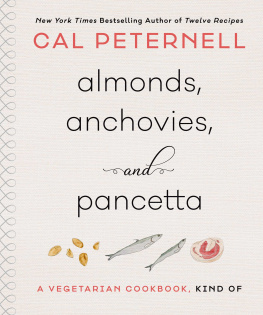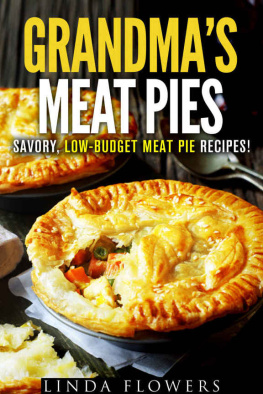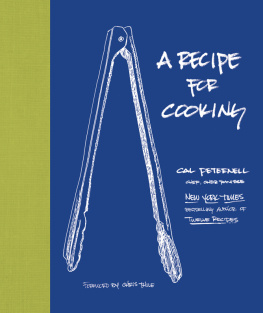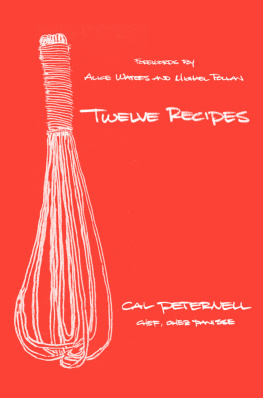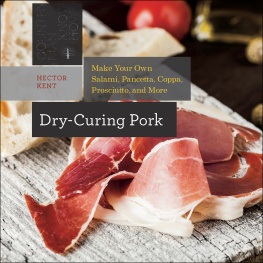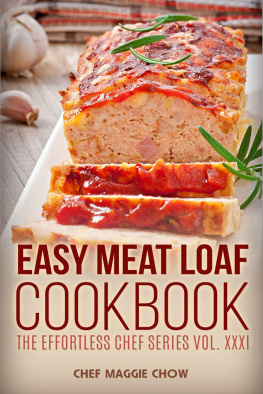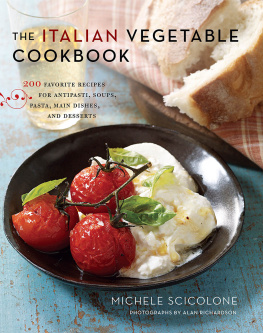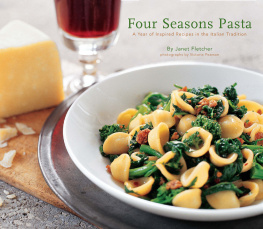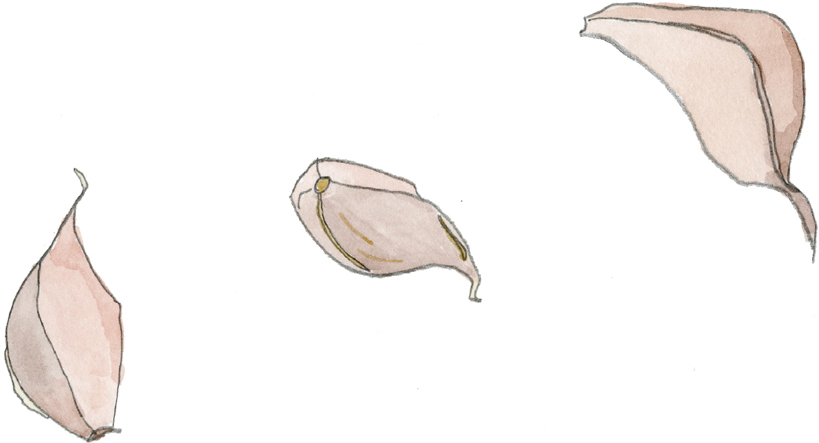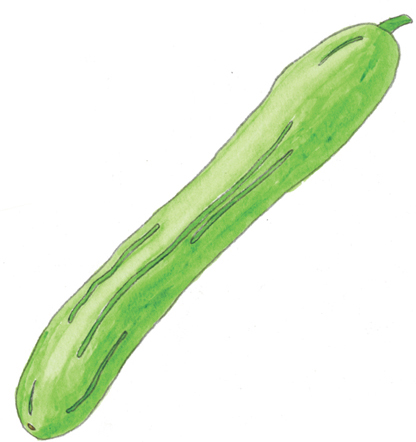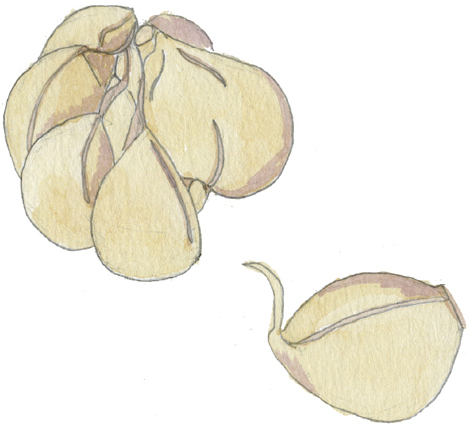Contents
Contents
Guide
Twelve Recipes
A Recipe for Cooking
For Liam, Milo, and Henderson
You three make life for me very much better
than almonds, anchovies, and even pancetta!
My favorite meals are cooked, and eaten, together with you.
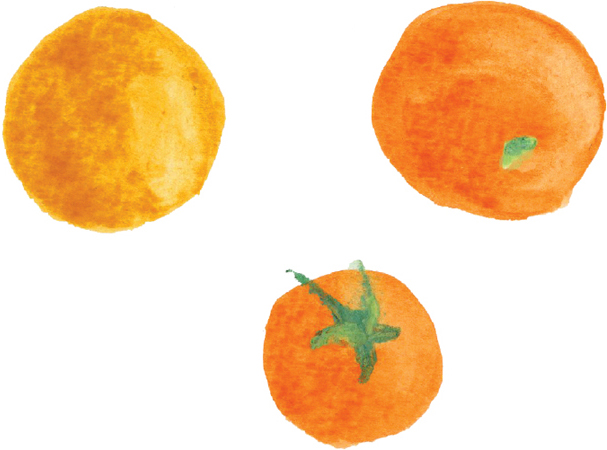
The way I like to eat today is the same way people have been eating forever: vegetables at center-plate seasoned with a little bit of meat or fish to make it savory and satisfying. All over the world, we love, for example, the way a smoky ham hock does good things for a pot of beans or skillet of greens, how chicken stock gets slowly pulled into simmering rice, how shavings of bonito brine our broths. A little of the right kind of meat goes a long way. There are many right kinds, but in this book, the right ones are anchovies and pancetta, and, because nuts are the meat of the plant world, Ive added the fatty and flavorful almond, a kindred spirit. (Other kinds of nuts, as well as varieties of cured pork and fishes, are in here toosubstituting, say, walnuts for almonds, bottarga for anchovies, or bacon for pancetta is encouraged.) Its a kind of vegetarian diet, eaten by those of us who love vegetables so much that we sometimes honor them with small gifts, bringing offerings of toasted nuts, of salted fishes, and of sweet cured pork bellies.

I cook this way first for the flavor, but also because it makes sense: in a crowded world full of eaters, taking savory little bites is inarguably better than big meaty mouthfuls. Its healthy, leans toward sustainability, and is economical in a way that pleases both palate and pocketbook. And when that grilled steak, roasted chicken, or fried fish fillet does come along, I enjoy it all the more.
In a way, this cookbook, and so much in cooking, is really about one ingredient: salt. Salt draws out and enhances flavors, but it also preserves. Anchovies and pancetta, cured for the savoriest of eating, would not exist without salt. Nor would other staples-turned-delicacies like baccal, kimchi, sauerkraut, lox, olives, capers, Parmesan, prosciutto, bresaola, biltong, or umeboshi. One need not scrape too deeply beneath the crystalline crust of the history of salt-preserved foods to learn that they are ultimately peasant foods, invented to keep excess seasonal harvests from spoiling. Though few of us cure our own meats, fishes, and vegetables these days, we have evolved culinarily to crave them. There is even a certain pride shown in the enjoyment of cured foods, a bravado that comes from the way that salt can amplify a foods essential funkiness and render it funkier still, like Bootsy thumping hard on the bass.
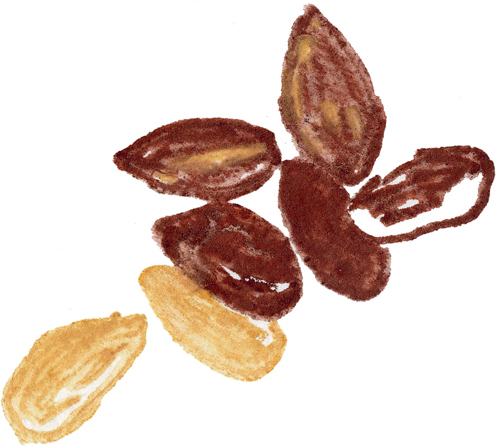
Almonds arent just tagging along herejust like pancetta and anchovies, they can be added in small amounts to bring a flavor boost to a dish. They compare favorably fat-wise and deliver similar umami levels, especially when ground up. Almonds can also be used in larger amounts, in desserts of course, but also in savory sauces, soups hot or cold, and to enrich stews. If you prefer to eat only plants, this is your ingredient (but dont ignore the other sectionsthe anchovies and pancetta can, if they must, be easily left out of many of the recipes).
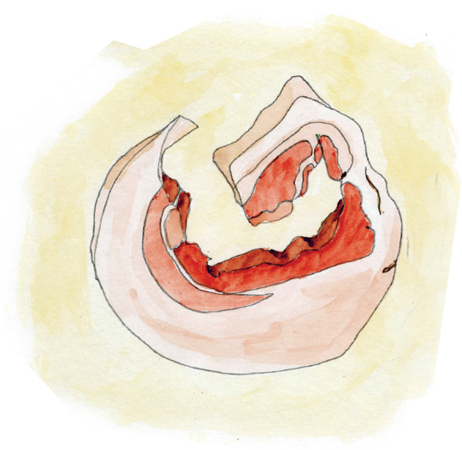
I admire the conviction of those who do their cooking and make their feasts using only plants. Just like the finest and freshest vegetables, vegetarians dont need anchovies, fish sauce, bacon, or pancetta, but sometimes I wonder if they might want some. When, for example, stalks of spring asparagus are just so, you should, by all means, cook them as simply as possible, if at all, to eat straight, with a little salt and olive oil. Another time, try them tossed with sizzled sage and pancetta, say, or almonds. Vegetables of every sort and of all seasons deserve to be brought up a notch with judicious additions of one, or more, of the trio. Taste your sauted summer peppers or simmered autumn greens and see if they dont want a little anchovy or pancetta melted in. Deep in winter, make squashes crunchy with almonds, roasted roots rich with pancetta, and bittersweet chicories pungent with anchovies.

Eat lots of vegetables to stay healthy, and give them a savory fishy, nutty, or porky boost to keep happy.
HOW TO USE THIS COOKBOOK
The best cooking begins with the best ingredients, no way around it. If you think you cant tell the difference between season-less produce that has made its way from factory farm to vast supermarket and in-season stuff from a local farm, or that you grew yourself, I think you are not giving yourself enough credit: You absolutely can! It doesnt mean that you shouldnt cook with whatever youve got right nowyou should, of coursebut that it is very much worth it to seek out better meats, dairy, produce, everything, for next time. I encourage you further to substitute other varieties of a particular vegetable for the one called for in my recipe, and indeed to substitute other vegetables entirely if they seem better at the market. The green beans dont look great but the snap peas do? Switch them out. I ask for Persian cucumbers, but your stores only got English? Totally fine.
Some of the recipes herepastas, salads, appetizerscan stand alone. You know what to do with those. Many others can play their traditional roles on the plate alongside fish or meat, but I often will cook several sides and serve them together to make a mealsometimes with rice, polenta, or a good loaf of bread. For example:
&
&
&
&
&
&
&
&
ON POUNDING GARLIC AND ANCHOVIES
First, a request: get a mortar and pestle, please. (A good size one, about five inches across, preferably made of olive wood or granite. They dont cost much and never wear out, though I had a mortar made of lesser wood that absorbed too much garlic and so on and started to go a bit rogue after a while. I set it free.) For pounding garlic, anchovies, or almonds, your mortar and pestles the thing.
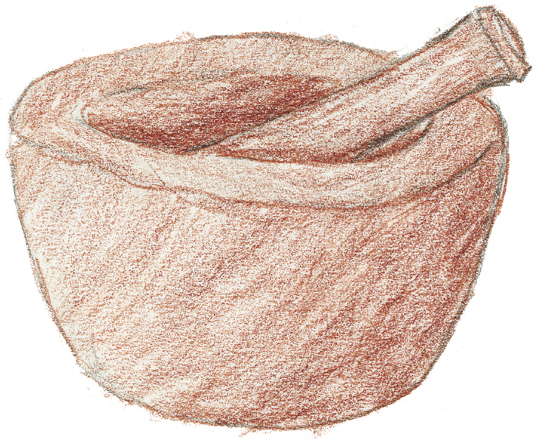
Garlic: Sprinkling a pinch of salt on a raw garlic clove before pounding helps it to become a liquid-y pastewhat you want when youre adding raw garlic to vinaigrettes, pesto and other green sauces, raita, aoli, and so on. (For reference, my pinch of salt is the equivalent of a quarter of a quarter-teaspoon. I measured it for you, reader: four pinches fill a quarter-teaspoon measure.) Garlic can be pounded with salt in a mortar and pestle, or, if youve ignored my request, on a cutting board with a chefs knife like this: place the garlic clove on a cutting board, put the flat side of the knife atop it, and smack the knife hard with your hand. Sprinkle the crushed clove with salt, and crush it again. Chop the garlic holding the tip of the knife down and using a paper-cutter motion. When lots of sticky garlic clings to the knife, smear it sideways so it stays on the board. Continue crushing, chopping, and smearing until the garlic and salt have turned almost liquid.
Next page
